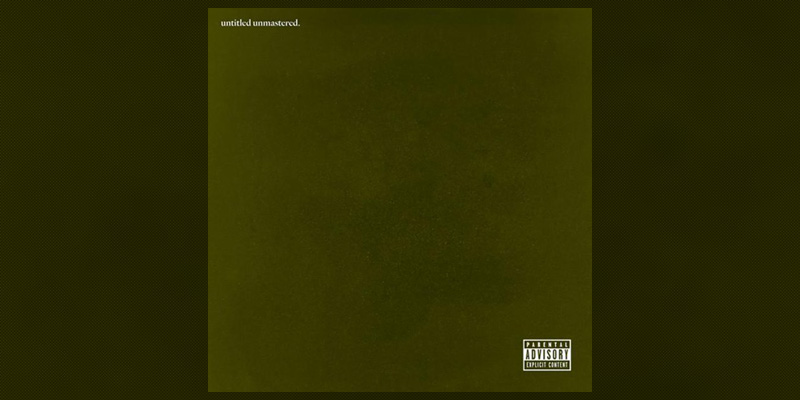Kendrick Lamar’s “untitled unmastered.” reveals the rapper’s distinct creative style
Photo Courtesy of Aftermath Entertainment
Lamar’s simplistic cover represents the rawness and simplistic nature of his latest album “untitled unmastered,”
Last month at the Grammy Awards, Kendrick Lamar stood in front of the microphone wearing shackles, a prison uniform, and flanked by others prisoners within cells on either side of him. As the saxophone wailed and Kendrick began to rap, it was with observable urgency and purpose, as if Lamar was putting up a fight to get the words out. During this performance, he performed excerpts from “?untitled 05 | 09.21.2014.,” a track off his latest, surprise-release, “untitled unmastered.” Similarly to his 2015 record, “To Pimp a Butterfly,” “untitled unmastered.” is a set of eight tracks rife with political provocation, musical experimentation through genre fusion, and raw artistic genius.
All of the tracks on the record—with the exception of “untitled 07 | 2014 – 2016″—are untitled demos from “To Pimp a Butterfly” recording sessions. They are, therefore, premature—nearly lo-fi sounding—yet in the most interesting of ways. This view of Lamar, while not an essential one, is immediately striking in the way it displays his genius at work; it’s a look into his natural thought process and shines light on the high-level of refinement that he applies to his music. Vocal effects are minimal, leaving unshrouded Lamar’s voice, an elastic band that he bends at his will, with just as much purpose in the storytelling as the lyrics themselves.
On some tracks, Lamar’s rapping is almost melodic, effectively taking the place of a hook on “untitled 02 | 06.23.2014.,” on which he dwells on an inner conflict of balancing his past, in the notoriously violent city of Compton, CA—the birthplace of gangster rap and hometown of N.W.A., Dr. Dre, Easy-E etc.—with his future in the patriarchal, whitewashed music industry: “Seen black turn ’em Burgundy/Hundred of them, I know I’m greedy/Stuck inside the belly of the beast/Can you please pray for me?”
On other tracks, Lamar dives headfirst into broader problems much bigger than himself; he attacks institutionalized racism on “untitled 05 | 09.21.2014.”—”I fall behind my skeleton/they tell me that I’m blind/I know that I’m intelligent/my confidence just died”—and outlines the stereotypical ambitions of Indians, Asians, blacks, and whites on “untitled 03 | 05.28.2013.,” while also exposing exploitation in the music industry—”(What the white man say?) A piece of mine’s/That’s what the white man wanted when I rhyme/Telling me that he selling me just for $10.99.”
Midway through the album, the heaviness of the record is relieved for three minutes and 28 seconds, with a love-song featuring CeeLo Green about appreciating the bizarre or otherwise embarrassing traits of one’s lover—”I’m bizarre, avant-garde/Both sides of me are evenly odd/It’s attractive/You’re intrigued.” It’s a well-needed rest on an album replete with topics that are generally tough to discuss. The record then closes out with the three-part lo-fi track, “untitled 07 | 2014 – 2016,” on which Lamar revels in the ecstasy of success, and he closes reflecting sorrowfully on the financial problems facing black Americans on “untitled 08 | 09.06.2014.”
This compilation of demos, though at first glance a lesser accompaniment to Lamar’s last album, is an interesting look into the artistic process of one of the greatest voices of our generation and elaborates on the themes and unique musical stylings of “To Pimp A Butterfly” with consistent poise and purpose.






































![Teacher Lore: Mr. Hillman [Podcast]](https://bsmknighterrant.org/wp-content/uploads/2025/03/teacherlorelogo-1200x685.png)




